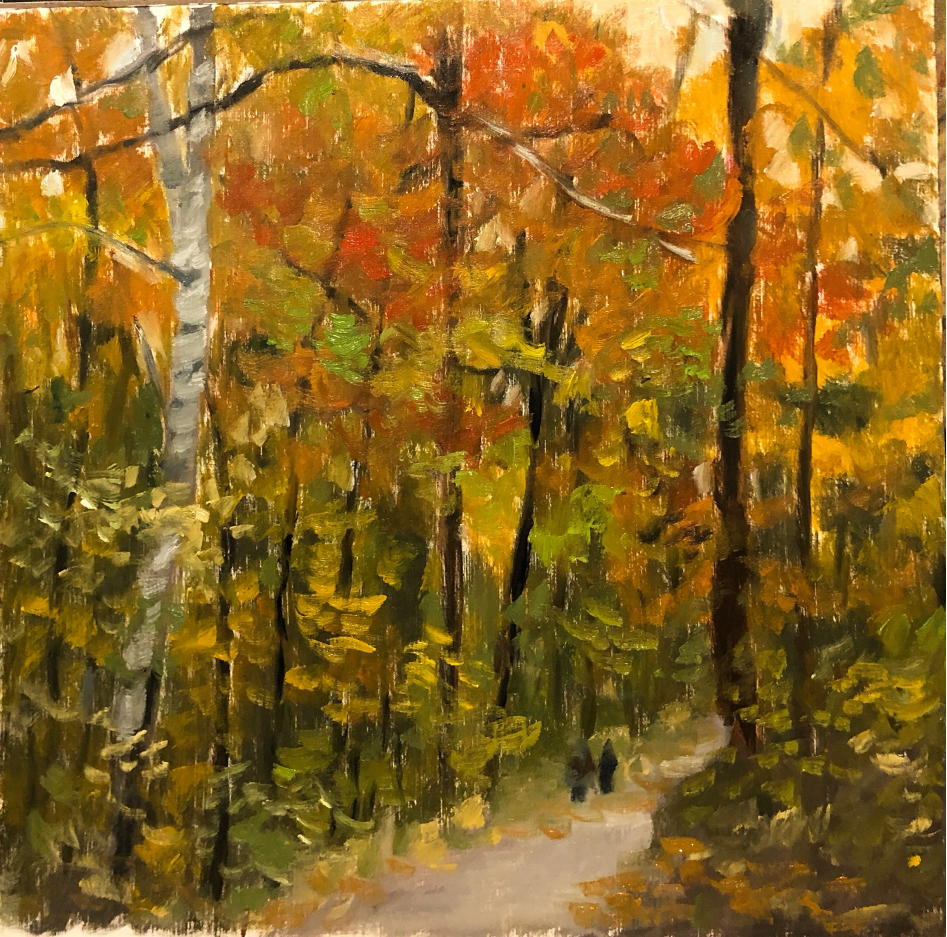
- Art Process and Technique
- News
- year2024
Alla prima or virtuoso painting has become one of the most powerful mediums of creativity for artistic expression over the years.
Alla prima is an Italian term that translates to "at first". It is a painting technique where the artist completes a painting in one sitting without allowing the layers of paint to dry. Wet paint is applied to a still wet layer. The approach requires some spontaneity and the artist must use skill and intuition to match colour and value, whether portraits or landscapes.
During the twentieth century, “Modern Art” gained the upper hand in the art world. The focus became impulse and intuition. Many different styles come under the umbrella of Modern Art, but a common denominator seems to be a rejection of art history and years of learning about depicting subjects with time-tested drawing techniques. Eventually, experimentation with the creation of form and colour were removed from art curriculums in schools; those who still used those techniques were classified as illustrators. In short, comprehensive training in drawing and painting went out the window. Yet, classical training did remain in the background.
Alla prima has been known in the visual arts since the 16th century. Initially, it was used for auxiliary purposes, when making portrait or landscape sketches. Subsequently, the painter would create, based on the sketches available in his workshop, a finished work, and this was the norm for a long time. But, a century later, the attitude towards technology had already changed. Many outstanding masters of the Baroque Period, and then Rococo, began to use it as the main method of painting.
The Impressionists maintained classical art training, but were able to present images in a new, looser fashion. Monet, one of the founders of Impressionism, was able to discern the enormous possibilities of this technique for conveying the artist’s fleeting impressions on canvas. A classic example of Monet’s creativity is without doubt the painting “Impression, Sunrise“, painted by the great master in just such a manner. He went on to apply techniques such as using light and shadow to define forms in his work. And still, drawing and representational skills always appeared as correct in this wet-on-wet style, lurking in the background.
Alla prima artist Richard Schmid wrote "My formal training involved working from life exclusively, using at first the conceptual and technical methods of the Direct painters – the Flemish, Dutch, and Spanish Masters, and then the artists of the Golden Age of painting (the late nineteenth century) – Italian, Scottish, French, Slavic, Russian, Scandinavian, and American painters. The aim was not to imitate their styles, nor was it necessarily to adopt their brushes or colours and medium. My quest was to understand what they knew, how they thought, and how they put it down on canvas."
The beauty of the brushwork on the canvas speaks about the subject. The painter, the environment, and the subject all work together on the final representation on the canvas.
The main focus of alla prima is edges: soft, blended ones, contrasted with those sharply defined. To control these edges and the way the paint is mixed means proper preparation of colours and specific handling of the material. Alla prima provides an overarching command of the whole picture because everything is being painted ‘all at once’ in the same session. The process requires starting in a generalized way, gradually working towards a certain emphasis as the work is completed to resolution. It also requires a degree of serendipity and a readiness to work with accidents and discoveries. Adequate preparation and organization help carry this somewhat risky activity much further than one might anticipate at the start. Several tones should be mixed for each colour, prepared in contrasting light and dark shades, with the darks being less colourful (or more neutral) than the lights. The darker mix of each colour can be painted first, then the lighter one.
The main advantages with using this technique are speed, and capturing the ‘here and now’ in one sitting. No need for the layers to dry. The process also builds confidence, where the artist soon becomes fearless about where to begin and end. Some drawing ability is required, as it may be difficult to accurately convey volume and shape, colours, and shades on canvas or paper without a certain amount of practical experience. The work does evolve quickly and appears spontaneous, though perfectionists may be annoyed.
Alla prima is not suitable for all artists, but any 'green' painter can try their hand at it, particularly someone who is not afraid to experiment and is eager to gain stylistic recognition.
Several members of FASM use alla prima techniques, one of whom is Barb Tate. She uses oil paints and starts by putting in the dark values first, covering the canvas in one pass, and keeps working until satisfied with the result. The painting shown, ‘Hilton Falls’, was prepared in 90 minutes and pictures a trail she hiked last fall. Probably the most difficult part of painting like this is not to overwork it. Barb regularly paints en plein air using the alla prima method with local artists and FASM members. She says " I love the energy and feeling I get when a plein air alla primapainting just works without too much effort or correction. That’s what we artists are always trying to capture."
Written by Peter Reitsma, FASM Member
